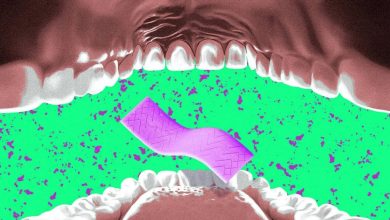The Science of Voice: How It Works, Changes, and Affects Our Lives
Understanding the Mechanisms of Sound Production, Vocal Health, and the Impact of Aging, Puberty, and Disorders on the Human Voice.

Watan-Others often notice changes in our voice before we do. During a phone conversation, someone might suddenly ask, “What’s wrong? Your voice sounds different.” In winter, and possibly in other seasons, a person may experience changes in their voice.
Some may not pay much attention to this, but for professionals who rely on their voices—such as teachers, broadcasters, singers, and others who depend on vocal clarity and distinction for their career success—voice changes are significant.
Facts About the Voice
To understand how the voice is produced, the mechanisms behind it, and how malfunctions lead to voice disorders, here are some key facts about voice changes, including both expected and unexpected causes.

1. Voice Production
The process of voice production involves three anatomical components:
-
The Larynx (Voice Box): Located in the throat at the top of the windpipe, it resembles a hollow tube about 5 cm in height. It is responsible for producing sound, allowing airflow during breathing, and protecting the airway during swallowing.
-
Vocal Folds (Vocal Cords): These soft, fold-like tissues are the main vibrating component of the voice box. They consist of a cover (superficial layer), a vocal ligament (intermediate and deep layers), and a body (thyroarytenoid muscle).
-
The Glottis and Epiglottis:
- The glottis is the opening between the vocal folds, which opens and closes during breathing, swallowing, and voice production.
- The epiglottis is usually upright during breathing, but during swallowing, it bends backward to cover the entrance of the windpipe, preventing food from entering.
- In many languages, the epiglottis is not necessary for speech sounds, but in some languages, it is used to produce consonantal sounds, such as the Arabic letters “ح” and “ع.”
Spoken words are produced through three components: voiced sound, resonance, and articulation. This can be summarized in the following equation:
Voice as we hear it = Voiced sound + Resonance + Articulation.
To clarify:
- Voiced sound is the original sound created by the vibration of the vocal folds, often described as a “buzzing” noise. The voiced sound in singing is more varied and decorative than in speech.
- Resonance amplifies and modifies the voiced sound through the vocal tract’s resonators (throat, mouth cavity, nasal passages, and sinuses), creating a unique vocal identity.
- Articulation involves the precise shaping of the sound by the tongue, soft palate, and lips, forming distinct words for each speaker.

2. Pitch and Loudness Variations
Voice production depends on the rapid vibration of the vocal folds, occurring in cycles of opening and closing. The rate of these vibrations determines pitch and loudness:
- Men: ~110 Hz (cycles per second) → Low pitch
- Women: 180–220 Hz → Medium pitch
- Children: ~300 Hz → High pitch
A higher pitch results from an increase in the frequency of vocal fold vibrations.
A louder voice results from an increase in the amplitude of vocal fold vibrations.
The voice production process involves three steps:
- Air pressure from the lungs builds up beneath the vocal folds.
- Airflow is coordinated by the diaphragm, abdominal muscles, and chest muscles.
- Vocal folds vibrate in a repeated cycle, producing rapid air pulses that generate sound.
The loudness of the voice depends on how forcefully air pushes the vocal folds apart and how long they remain separated during each vibration cycle.
The pitch of the voice depends on the frequency of vibrations.

Vocal Cord Flexibility
The human voice is remarkably adaptable, capable of producing different tones such as whispering, speaking, public speaking, shouting, and various singing styles across cultures.
For optimal voice production, the vocal folds must be flexible and able to open and close completely. Their natural elasticity allows efficient vibration, which is crucial for voice control. Even minor stiffness or damage in one part of the folds can lead to voice disorders.
- Failure to fully close the vocal folds results in a breathy voice due to air leakage.
- Inability to adjust tension properly can prevent high-pitched sounds or cause voice breaks.
- Changes in tissue mass (inflammation, scarring, growths, swelling, stiffness, or poor closure) can lead to voice issues like hoarseness and voice strain.
The structural and functional integrity of the vocal folds, along with the coordination of muscles, cartilage, and nerves, determines voice quality.
4. Voice Changes During Puberty
Voice changes are among the many developments occurring in both boys and girls during puberty. In males, voice deepening usually occurs between ages 11 and 15 as testosterone increases, leading to larynx growth.
For boys:
- The larynx enlarges, and the vocal cords become longer and thicker.
- The bones of the face grow, and sinus and throat cavities expand, creating more space for sound resonance, resulting in a deeper voice.
This process is similar to a guitar string:
- A thin string vibrates to produce a high-pitched sound.
- A thicker string vibrates to produce a deeper sound.
Before puberty, the larynx is small, and the vocal cords are thin, producing a higher-pitched voice. As the larynx and vocal cords grow, the voice takes on a more mature, adult quality.
For girls, voice deepening occurs subtly, with a small decrease in pitch. Facial, head, and neck structures grow less significantly than in males, resulting in milder voice changes. Some studies suggest that hormonal fluctuations during puberty and menstrual cycles can temporarily cause vocal fatigue, reduced vocal range, or loss of vocal strength.

5. Voice Disorders and Treatments
Some people develop voice disorders due to various factors, which result in abnormal voice quality. Otolaryngologists (ENT specialists) and speech-language pathologists diagnose and treat these conditions.
Risk factors for vocal dysfunction include:
- Aging
- Alcohol consumption
- Allergies
- Neurological disorders (e.g., Parkinson’s disease, stroke)
- Acid reflux (GERD)
- Respiratory infections
- Scarring from surgery or trauma
- Frequent yelling or excessive voice use
- Smoking
- Throat cancer
- Dry throat
- Thyroid issues
Treatment options depend on the cause and may include:
- Rest, hydration, and voice therapy: The vocal cords, like any other body part, need rest and proper hydration. Speech therapists teach techniques to optimize voice use.
- Allergy treatments: If allergies cause excessive mucus, addressing them can improve voice function.
- Quitting smoking: Smoking cessation enhances voice quality and overall health.
- Medications: Depending on the condition, medications can reduce swelling, treat acid reflux, or stop abnormal blood vessel growth. Some treatments involve oral medications, injections into the vocal cords, or topical applications during surgery.
- Surgical removal of vocal fold growths: In some cases, even benign growths require surgical removal. Newer treatments, such as laser surgery, can cut off blood supply to these growths, minimizing damage to the vocal folds.

Conclusion
The human voice is a complex system influenced by anatomical structures, physiological mechanisms, and external factors. Voice changes can result from natural processes like puberty or be caused by medical conditions. Understanding these processes helps in maintaining vocal health, especially for professionals who rely on their voice for their careers.




